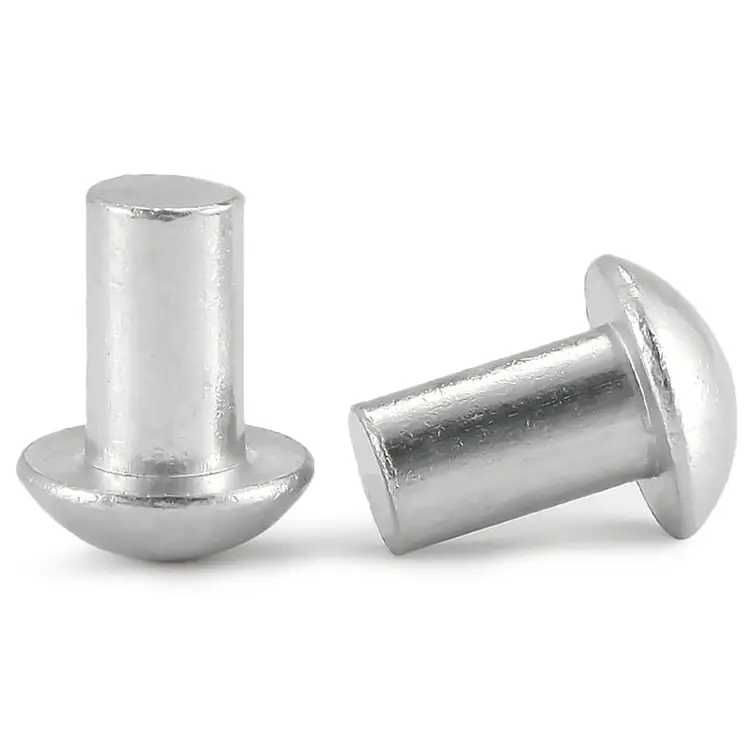Solid Rivets: The Reliable Fastening Solution for Strong and Permanent Joints
2025-06-23
Solid rivets are one of the oldest and most trusted types of mechanical fasteners used to join two or more materials permanently. Known for their strength and durability, solid rivets play a crucial role in various industries, from aerospace and construction to manufacturing and automotive.

What Are Solid Rivets?
Solid rivets are cylindrical metal pins with a pre-formed head on one end. During installation, the rivet is inserted through aligned holes in the materials to be joined, and the tail end is deformed (or “upset”) to form a second head, clamping the materials tightly together. This process creates a permanent and vibration-resistant joint.
Key Features of Solid Rivets
High Strength and Durability
Solid rivets provide robust and long-lasting joints capable of withstanding heavy loads, impacts, and vibrations.
Variety of Materials
They are available in various materials such as aluminum, steel, stainless steel, copper, and titanium, allowing selection based on strength, corrosion resistance, and weight requirements.
Different Sizes and Shapes
Solid rivets come in multiple diameters and lengths, with head styles like round, flat, or countersunk to suit different applications.
No Threads or Moving Parts
Their simple design reduces the risk of loosening over time, making them ideal for safety-critical assemblies.
Common Applications
Aerospace Industry
Used extensively in aircraft construction for joining skin panels, structural components, and engine parts.
Automotive Manufacturing
Provide strong, vibration-resistant fastening in vehicle frames, body panels, and engine components.
Construction and Infrastructure
Used in bridges, steel frameworks, and heavy machinery where reliable permanent joints are required.
Shipbuilding and Marine Applications
Corrosion-resistant solid rivets help assemble hulls and decks exposed to harsh marine environments.
Advantages Over Other Fasteners
Greater strength and reliability than many screws or bolts in high-stress applications.
Resistance to loosening under vibration or thermal expansion.
Lightweight options available for applications requiring reduced mass.
Installation Process
Solid rivets are typically installed using a rivet gun or hammer and bucking bar. The rivet is heated or cold-set depending on the material and application. Precise control during installation ensures strong, uniform joints without damaging the base materials.
Conclusion
Solid rivets remain a fundamental fastening method where strength, reliability, and permanence are essential. Their proven performance across demanding industries underscores their importance as a simple yet highly effective solution for creating strong, vibration-resistant joints. Whether in aerospace, automotive, or construction, solid rivets continue to be trusted components in engineering and manufacturing.


